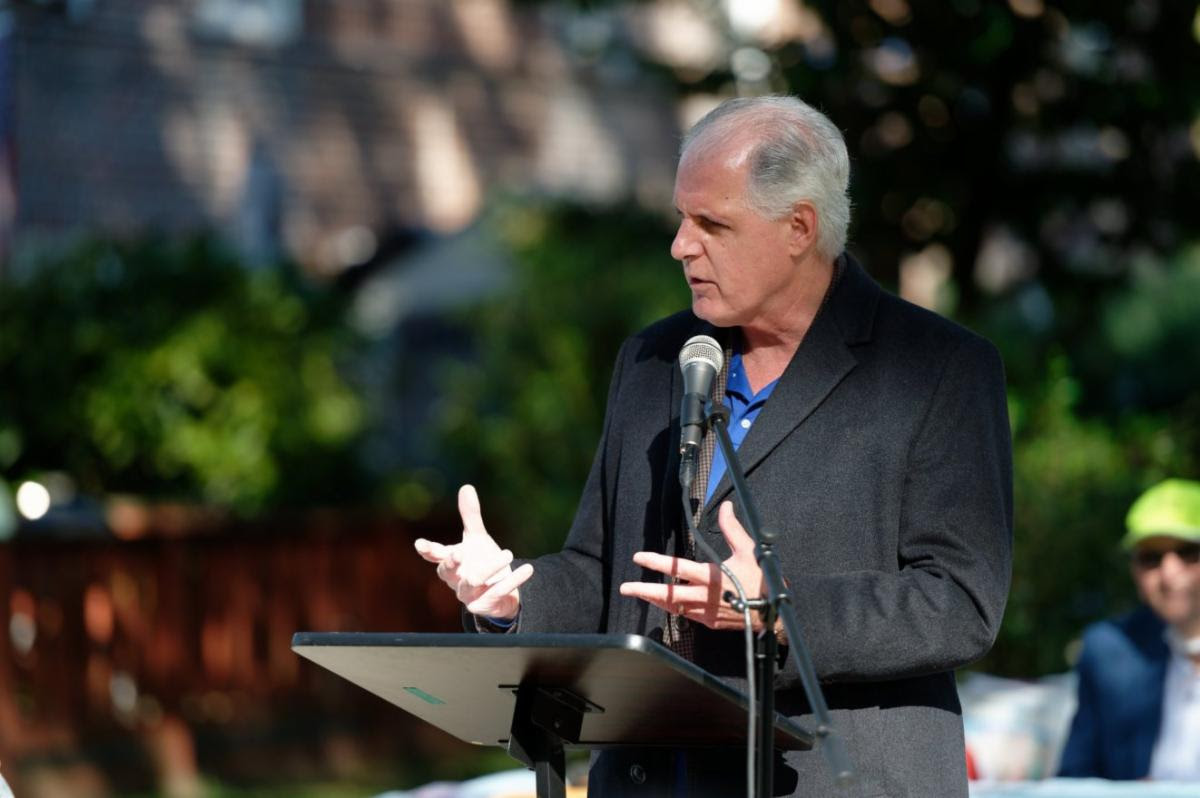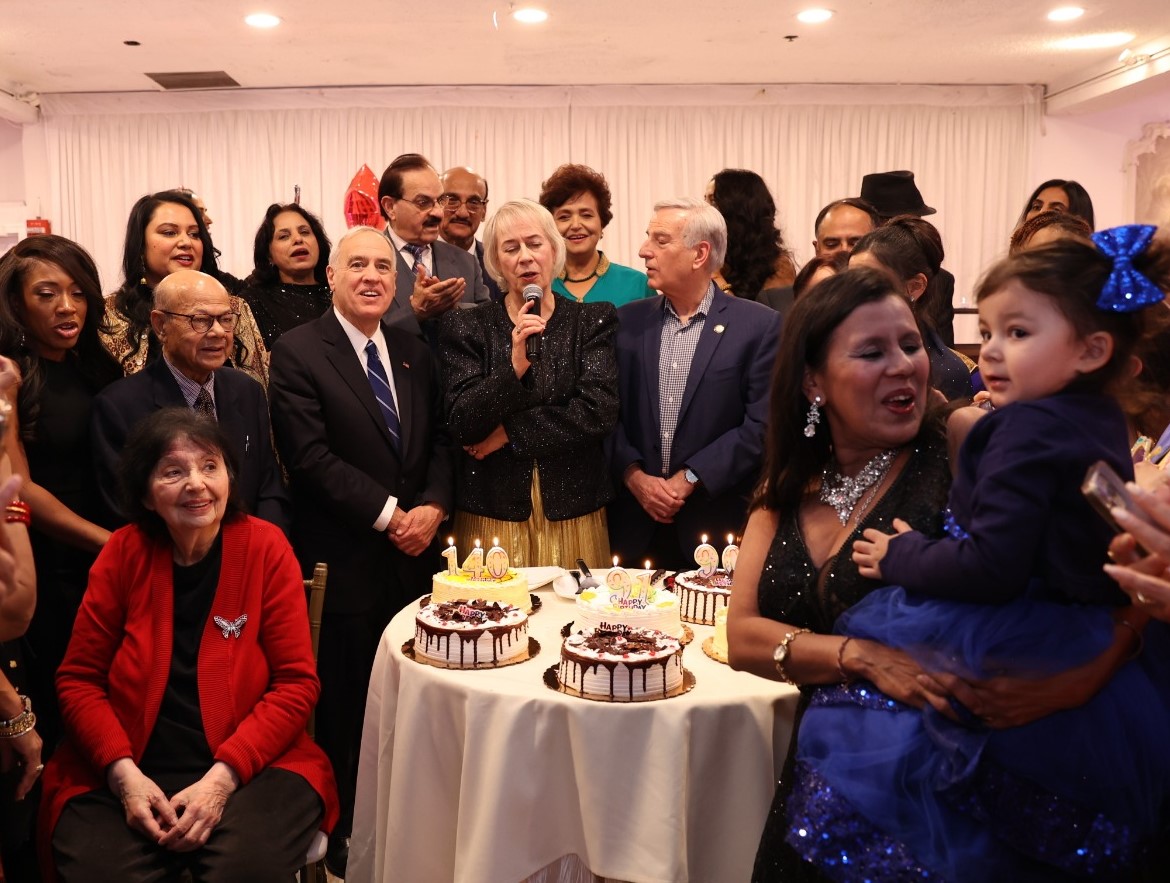Politicians gave their all
To The Editor:
Re “St. Vincent’s postmortem: Why Village hospital died” (news article, June 23):
Some of the points raised in your recent article on St. Vincent’s are vividly true. Since the closure of St. Vincent’s, the community has come to learn how profound the mismanagement was of this historic institution. It is truly a shame that for so many years, this fine hospital was carelessly led into the abyss.
However, the point raised about the local elected officials being overwhelmed by St. Vincent’s predicament is inaccurate. The hospital was warned by its creditors in early 2009 that its financial situation was spiraling out of control. St. Vincent’s subsequently notified the New York State Department of Health, but chose to restrict the knowledge of this impending disaster. Once the local electeds were notified — nearly a full year later — we immediately went into overdrive to save the hospital.
Hardly overwhelmed, we mobilized with a unifying message to the governor, the media and anyone else who would listen — that the West Side of Manhattan must have a 24-hour, seven-days-per-week, full-service hospital.
Had St. Vincent’s been upfront about its dire straits sooner, we would have had considerably more time to work toward a solution without having to perform triage simultaneously.
This is the sad truth of the demise of St. Vincent’s, but we will continue our push for a new full-service hospital here.
Christine C. Quinn Quinn is speaker, New York City Council
Task force still needed
To The Editor:
Re “Keep N.Y.U. task force” (editorial, July 7):
I joined the Borough President’s Community Task Force on N.Y.U. Development last fall, as a representative of the Public School Parent Advocacy Committee, to speak to issues of school overcrowding and how New York University development might affect and mitigate the overcrowding of our schools. In this capacity, I served as co-chairperson of the Sustainability and Amenities Committee of the task force and drafted the task force’s Sustainability and Amenities Recommendations, which addressed concerns about school overcrowding, as well as environmentally sound construction practices and the maintenance of our lived environ-ment, both ecological and social. These issues span community boards and called on us to reflect on the N.Y.U. plan as a lasting, integrated whole.
Like most members of the task force, I imagine, I would acknowledge that perhaps the meatiest and most substantive deliberations on N.Y.U. expansion will take place at the community board level as part of the ULURP process. But this to my mind does not make the task force obsolete. The school overcrowding issue in particular — on which the borough president has shown exemplary leadership — does not lend itself to consideration as part of the ULURP process. The school issue straddles community boards and follows a timeline that overreaches ULURP deliberations.
The failure of past promises for school construction related to N.Y.U. expansion (and elsewhere) exemplifies some of the limitations of the ULURP process in defending community needs over time and across borders. (ULURP has obviously not prevented Downtown schools from becoming overcrowded.) The creation of the task force was historically significant in providing the community with a broader, more continuous and potentially more historically coherent means for formulating its priorities in the face of the mighty power of developers. I don’t see how “suspending” the task force serves the community’s needs, at least regarding school construction and environmental protection. The task force can only augment and inform the ULURP process, and it can’t do it any harm.
Ann Kjellberg
Kjellberg is a member, Public School Parent Advocacy Committee
The Villager gets it
To The Editor:
Re “Keep N.Y.U. task force” (editorial, July 7):
I was pleased to see The Villager understand the importance of the Borough President’s Community Task Force on N.Y.U. Development. As a member of this task force, I can say we worked very hard to keep N.Y.U. focused on the larger community — Greenwich Village — that surrounds its campus. It is this historical community that draws students and faculty to the university.
At the same time that N.Y.U. demolishes and sweeps away the dust and bricks of Edgar Allan Poe, the Provincetown Playhouse and Eugene O’Neill, it conjures up these romantic images in all its catalogues: studying and walking the same streets, and sipping coffee in the same cafes as artists, writers and poets of long ago, Bob Dylan.
The task force is the one place to hold N.Y.U. accountable and transparent to the heirs of its treasured neighborhood. This is Greenwich Village, not N.Y.U. Village — for now.
Lee Schwartz
Schwartz is the 88 Bleecker St. liaison, N.Y.U. task force
Stringer makes a misstep
To The Editor:
Re “Keep N.Y.U. task force” (editorial, July 7):
My family strongly disapproves of Borough President Scott Stringer’s decision to “suspend” the N.Y.U. task force. We believe it is essential, particularly as N.Y.U. moves forward with its plans, to continue the task force’s work. We cannot understand or approve Mr. Stringer’s decision — and agree with your editorial position about this issue.
Sylvia Rackow
Rackow is a member, Neighborhood Preservation Committee, 505 LaGuardia Place
‘N.Y.U. gag force’?
To The Editor:
Re “Keep N.Y.U. task force” (editorial, July 7):
I find the recent announcement of the suspension of the N.Y.U. task force highly suspicious. Why? Because at the recent May meeting of Community Board 2 about the superblock plan, it came out that the task force had been given a “gag order” — which more than one member admitted did happen. About what is basically immaterial. That it happened at all — which to me means Stringer agreed to it as task force leader — was extremely upsetting.
And here we are, some few weeks out — and now the task force is being suspended? Why? Because we are finding out Stringer was giving unfair power to member N.Y.U.? The timing is just really smelly, Borough President Stringer!
I can appreciate that local forces, like the community board, “want in” on the process — and they should get in. But we should not hear of clandestine-like gag orders from any of them. The task force was organized by a public representative and there should be total transparency.
Margot Eisenberg
‘Miss you, George’
To The Editor:
Re “George Boyd, 71, fought mass-eviction effort to end” (obituary, July 7):
I miss you, George. It doesn’t seem possible that you are no longer walking up Second Ave. with your easy gait and dapper style, paper tucked under arm and coffee in hand. The East Village has lost a bit of its character and charm with your passing.
Janet Boyd
The times we shared
To The Editor:
“George Boyd, 71, fought mass-eviction effort to end” (obituary, July 7):
Georgie, I will always remember you, my cousin. We lived through tough times in N.Y.C., the Cuban missile crisis, segregation, Vietnam and many hostile environments. Uncle George and Aunt Bernice would have been very proud of their son.
Mark Boyd
U HAV it wrong on UHAB
To The Editor:
Re “The what’s what on squats” (Scoopy’s Notebook, June 30):
“In 2002, the Urban Homesteading Assistance Board, or UHAB — born in the ’70s to protect squatters’ rights… .”
UHAB was not born to protect squatters’ rights. Wherever did you got that idea?
UHAB was created to provide technical assistance and management training, among other things, to the tenants in city-owned buildings as part of the various programs the city had to return abandoned buildings into tenant-owned, affordable, cooperative housing. The 1970s was a time of massive landlord abandonment of occupied or vacant buildings, resulting in their becoming city-owned.
When UHAB stepped in to assist the squatters, it was a very controversial issue, and too complicated to go into so far after the fact.
Susan Leelike
E-mail letters, not longer than 250 words in length, to news@thevillager.com or fax to 212-229-2790 or mail to The Villager, Letters to the Editor, 145 Sixth Ave., ground floor, NY, NY 10013. Please include phone number for confirmation purposes. The Villager reserves the right to edit letters for space, grammar, clarity and libel. The Villager does not publish anonymous letters.
































